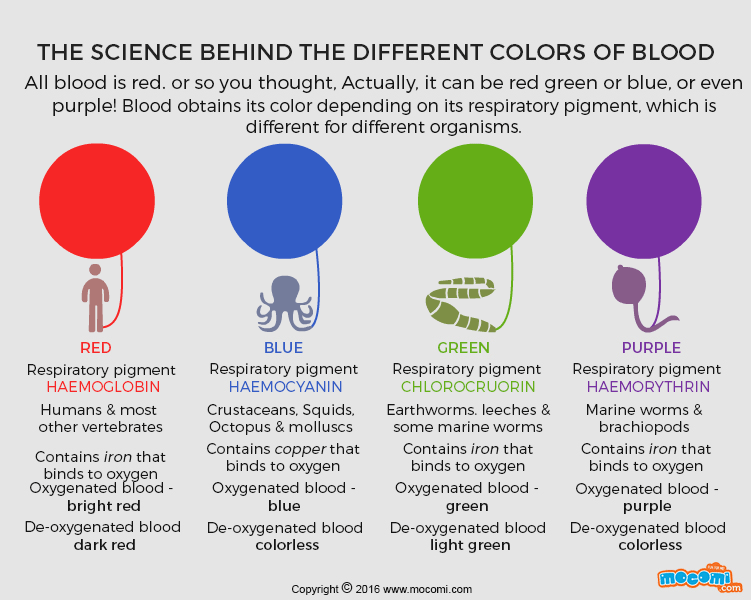Hemoglobin, a sophisticated protein molecule found in red blood cells, is present in human blood. Iron can be found in haemoglobin. Blood turns red as a result of an oxygen and iron reaction. Blood is not blue, despite the appearance of blue veins through the skin. It's possible that the amount of oxygen in the blood has something to do with why veins appear blue. Oxygen-rich blood is carried via arteries away from the heart so that it can be utilised by the body's organs and tissues. Deoxygenated blood is returned to the heart by the veins.

The idea that veins are blue because they convey blood that has lost oxygen is a widespread one. Regardless matter how oxygen-rich it is, blood in the human body is red, albeit the exact shade of red varies.
The majority of animals have red blood, just like people do. There are a few exceptions, though. Some varieties of crustaceans, squid, and octopuses have blue blood. Their blood has a significant amount of copper in it. Their blood is blue because copper combines with oxygen to get that colour.
Blood can come in several colours besides blue and red; some animals even bleed green. Due to an accumulation of biliverdin, the blood of the skink, a kind of lizard, is green. The liver produces biliverdin and bilirubin as waste products. These two byproducts are also produced by humans. However, biliverdin and bilirubin are transported by the body to the intestines and via the digestive system to be eliminated. Skinks cannot excrete biliverdin, thus it accumulates inside of them and changes the blood's colour.
Everyone is aware of the importance of blood to the human body. But how much blood actually exists in the body? The precise volume of blood in a person's body varies with their size. A person's blood volume increases with their size. Blood makes up about 7-8% of an individual's entire weight. Thus, a lady of average height has about 9 pints of blood, but a man of typical height has about 12 pints. Blood transfusions include injecting a patient who requires it with healthy blood from a donor.
When a person doesn't have enough red blood cells, they are anaemic. Some cancers and cancer therapies, such as chemotherapy. Red blood cell-related conditions, such as sickle cell disease. It is crucial that the blood type donated to someone who needs a blood transfusion has a suitable type. An individual's immune system might reject blood of a different type if they get it. This may endanger your life.